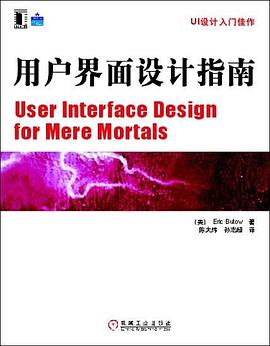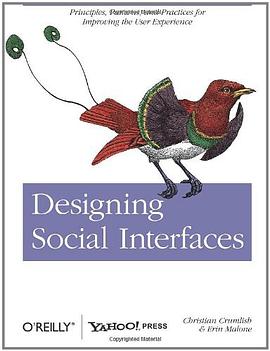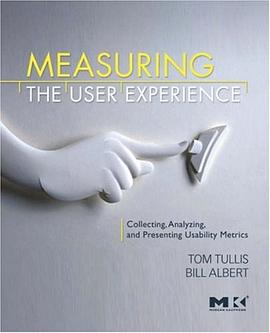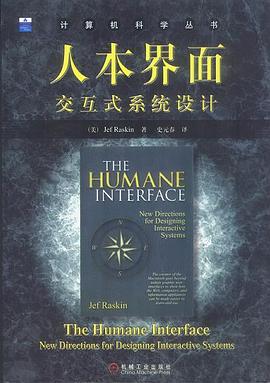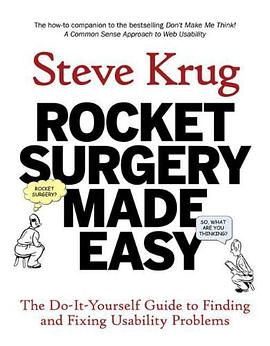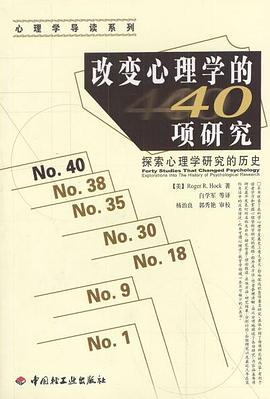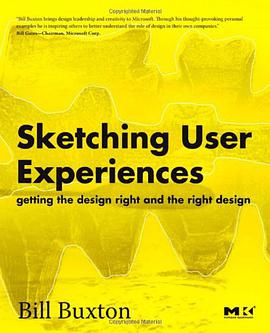
Sketching User Experiences 下载 mobi epub pdf 电子书 2025
简体网页||繁体网页
下载链接1
下载链接2
下载链接3
发表于2025-05-13
图书介绍
相关图书
图书描述
比尔·巴克斯顿本是音乐家出身,早在三十多年前便在他的艺术工作中应用计算机,这些早期经验,使他对科学技术的方方面面有了深刻的理解。后来他开始投身设计与研究,重点探讨人机交互以及科技的用户层面。 巴克斯顿曾于20世纪70年代末在多伦多大学从事研究,开发数字乐器,并大胆采用种种新颖的界面,自此一举成名,业界无人不晓。不久,施乐帕克研究中心留意到他的创新设计,让他参与一些前瞻性研究,如协同工作、交互技术以及普式计算等。后来,巴克斯顿又相继在SGI公司和Alias I Wavefront公司担任首席科学家。在此期间,他接触到了许多世界上一流的电影制片人和工业设计师。 目前,比尔·巴克斯顿在微软任职,成为研究的中坚为量。按照比尔·盖茨的介绍,巴克斯顿的主要工作有两方面:一是研究,二是致力将设计融叁公司文化核心。
Bill Buxton and I share a common belief that design leadership together with technical leadership drives innovation. Sketching, prototyping, and design are essential parts of the process we use to create new products. Bill Buxton brings design leadership and creativity to Microsoft. Through his thought-provoking personal examples he is inspiring others to better understand the role of design in their own companies--Bill Gates, Chairman, Microsoft
"Informed design is essential." While it might seem that Bill Buxton is exaggerating or kidding with this bold assertion, neither is the case. In an impeccably argued and sumptuously illustrated book, design star Buxton convinces us that design simply must be integrated into the heart of business--Roger Martin, Dean, Rotman School of Management, University of Toronto
Design is explained, with the means and manner for successes and failures illuminated by engaging stories, true examples and personal anecdotes. In Sketching User Experiences, Bill Buxton clarifies the processes and skills of design from sketching to experience modeling, in a lively and informative style that is rich with stories and full of his own heart and enthusiasm. At the start we are lost in mountain snows and northern seas, but by the end we are equipped with a deep understanding of the tools of creative design.--Bill Moggridge, Cofounder of IDEO and author of Designing Interactions
"Like any secret society, the design community has its strange rituals and initiation procedures. Bill opens up the mysteries of the magical process of design, taking us through a land in which story-telling, orange squeezers, the Wizard of Oz, I-pods, avalanche avoidance, bicycle suspension sketching, and faking it are all points on the design pilgrim's journey. There are lots of ideas and techniques in this book to feed good design and transform the way we think about creating useful stuff". -Peter Gabriel
I love this book. There are very few resources available that see across and through all of the disciplines involved in developing great experiences. This is complex stuff and Buxton's work is both informed and insightful. He shares the work in an intimate manner that engages the reader and you will find yourself nodding with agreement, and smiling at the poignant relevance of his examples.--Alistair Hamilton, Symbol Technologies, NY
Books that have proposed bringing design into HCI are aplenty, though books that propose bringing software in to Design less common. Nevertheless, Bill manages to skilfully steer a course between the excesses of the two approaches and offers something truly in-between. It could be a real boon to the innovation business by bringing the best of both worlds: design and HCI. --Richard Harper, Microsoft Research, Cambridge
There is almost a fervor in the way that new products, with their rich and dynamic interfaces, are being released to the public-typically promising to make lives easier, solve the most difficult of problems, and maybe even make the world a better place. The reality is that few survive, much less deliver on their promise. The folly? An absence of design, and an over-reliance on technology alone as the solution.
We need design. But design as described here depends on different skillsets-each essential, but on their own, none sufficient. In this rich ecology, designers are faced with new challenges-challenges that build on, rather than replace, existing skills and practice.
Sketching User Experiences approaches design and design thinking as something distinct that needs to be better understood-by both designers and the people with whom they need to work- in order to achieve success with new products and systems. So while the focus is on design, the approach is holistic. Hence, the book speaks to designers, usability specialists, the HCI community, product managers, and business executives. There is an emphasis on balancing the back-end concern with usability and engineering excellence (getting the design right) with an up-front investment in sketching and ideation (getting the right design). Overall, the objective is to build the notion of informed design: molding emerging technology into a form that serves our society and reflects its values.
Grounded in both practice and scientific research, Bill Buxton's engaging work aims to spark the imagination while encouraging the use of new techniques, breathing new life into user experience design.
. Covers sketching and early prototyping design methods suitable for dynamic product capabilities: cell phones that communicate with each other and other embedded systems, "smart" appliances, and things you only imagine in your dreams;
. Thorough coverage of the design sketching method which helps easily build experience prototypes-without the effort of engineering prototypes which are difficult to abandon;
. Reaches out to a range of designers, including user interface designers, industrial designers, software engineers, usability engineers, product managers, and others;
. Full of case studies, examples, exercises, and projects, and access to video clips (www.mkp.com/sketching) that demonstrate the principles and methods.
About the Author
Trained as a musician, Bill Buxton began using computers over thirty years ago in his art. This early experience, both in the studio an on stage, helped develop a deep appreciation of both the positive and negative aspects of technology and its impact. This increasingly drew him into both design and research, with a very strong emphasis on interaction and the human aspects of technology. He first came to prominence for his work at the University of Toronto on digital musical instruments and the novel interfaces that they employed. This work in the late 70s gained the attention of Xerox PARC, where Buxton participated in pioneering work in collaborative work, interaction techniques and ubiquitous computing. He then went on to become Chief Scientist of SGI and Alias|Wavefront, where he had the opportunity to work with some of the top film makers and industrial designers in the world. He is now a principal researcher at Microsoft Corp., where he splits his time between research and helping make design a fundamental pillar of the corporate culture.
* Covers sketching and early prototyping design methods suitable for dynamic product capabilities: cell phones that communicate with each other and other embedded systems, "smart" appliances, and things you only imagine in your dreams;
* Thorough coverage of the design sketching method which helps easily build experience prototypes-without the effort of engineering prototypes which are difficult to abandon;
* Reaches out to a range of designers, including user interface designers, industrial designers, software engineers, usability engineers, product managers, and others;
* Full of case studies, examples, exercises, and projects, and access to video clips that demonstrate the principles and methods.
Sketching User Experiences mobi 下载 pdf 下载 pub 下载 txt 电子书 下载 2025
Sketching User Experiences 下载 mobi pdf epub txt 电子书 格式 2025
Sketching User Experiences 下载 mobi epub pdf 电子书用户评价
##书中的内容比较丰富,读完后吸收的有以下几点: 旷野设计:这个是真正吸引我的一点。为旷野设计,为用户真实的使用环境而设计,“必须倾尽全力,透彻理解其发挥功用的环境和社会情境”,而不是坐在办公室里做一些脱离实际情形的东西。否则,产品就会缺少生命力。 奶牛规则:这...
评分 评分 评分 评分##最开始知道这本书是互联网的一些事上面的一片小文章。这篇文章主要是说把网站当做一个舞台,每个素材都是角色,那么每个素材的出现都应该向人物角色一样考虑它的合理性。除了文章本身概念很吸引我,我还记住了里面提到的一本书《用户体验草图设计》。 阅读完毕,却略感坑爹: 1...
评分 评分##入门读物 简单易懂但是并没有提及很多更新的值得争议的问题维度
评分##貌似比对读中文版的时候脉络清晰了,也是很实用的对设计过程的反思
评分Sketching User Experiences mobi epub pdf txt 电子书 格式下载 2025
分享链接
相关图书
-
 用户界面设计指南 mobi epub pdf txt 电子书 格式 下载
用户界面设计指南 mobi epub pdf txt 电子书 格式 下载 -
 在你身边,为你设计 mobi epub pdf txt 电子书 格式 下载
在你身边,为你设计 mobi epub pdf txt 电子书 格式 下载 -
 Handbook of Usability Testing mobi epub pdf txt 电子书 格式 下载
Handbook of Usability Testing mobi epub pdf txt 电子书 格式 下载 -
 About Face 3 mobi epub pdf txt 电子书 格式 下载
About Face 3 mobi epub pdf txt 电子书 格式 下载 -
 Designing Social Interfaces mobi epub pdf txt 电子书 格式 下载
Designing Social Interfaces mobi epub pdf txt 电子书 格式 下载 -
 Measuring the User Experience mobi epub pdf txt 电子书 格式 下载
Measuring the User Experience mobi epub pdf txt 电子书 格式 下载 -
 人本界面 mobi epub pdf txt 电子书 格式 下载
人本界面 mobi epub pdf txt 电子书 格式 下载 -
 交互设计 mobi epub pdf txt 电子书 格式 下载
交互设计 mobi epub pdf txt 电子书 格式 下载 -
 用户界面设计 mobi epub pdf txt 电子书 格式 下载
用户界面设计 mobi epub pdf txt 电子书 格式 下载 -
 Usability Testing and Research mobi epub pdf txt 电子书 格式 下载
Usability Testing and Research mobi epub pdf txt 电子书 格式 下载 -
 网站设计解构 mobi epub pdf txt 电子书 格式 下载
网站设计解构 mobi epub pdf txt 电子书 格式 下载 -
 Designing Web Usability mobi epub pdf txt 电子书 格式 下载
Designing Web Usability mobi epub pdf txt 电子书 格式 下载 -
 Web可用性设计 mobi epub pdf txt 电子书 格式 下载
Web可用性设计 mobi epub pdf txt 电子书 格式 下载 -
 交互设计沉思录 mobi epub pdf txt 电子书 格式 下载
交互设计沉思录 mobi epub pdf txt 电子书 格式 下载 -
 Rocket Surgery Made Easy mobi epub pdf txt 电子书 格式 下载
Rocket Surgery Made Easy mobi epub pdf txt 电子书 格式 下载 -
 豆瓣,流行的秘密 mobi epub pdf txt 电子书 格式 下载
豆瓣,流行的秘密 mobi epub pdf txt 电子书 格式 下载 -
 认知与设计 mobi epub pdf txt 电子书 格式 下载
认知与设计 mobi epub pdf txt 电子书 格式 下载 -
 改变心理学的40项研究 mobi epub pdf txt 电子书 格式 下载
改变心理学的40项研究 mobi epub pdf txt 电子书 格式 下载 -
 User-Centered Design Stories mobi epub pdf txt 电子书 格式 下载
User-Centered Design Stories mobi epub pdf txt 电子书 格式 下载 -
 网站重构 mobi epub pdf txt 电子书 格式 下载
网站重构 mobi epub pdf txt 电子书 格式 下载




